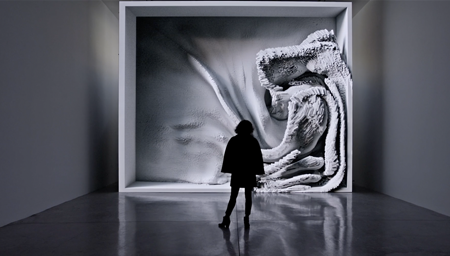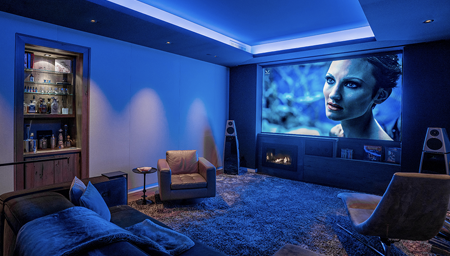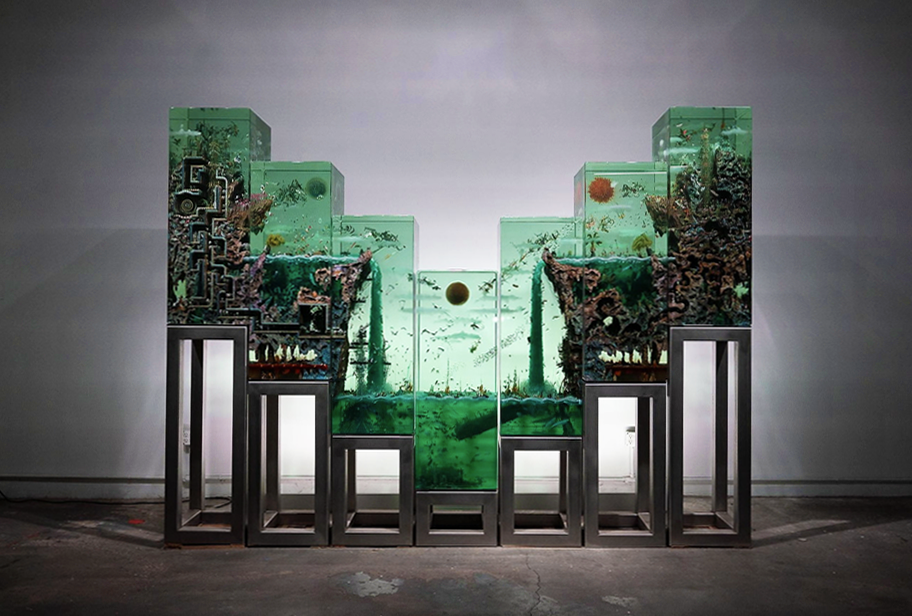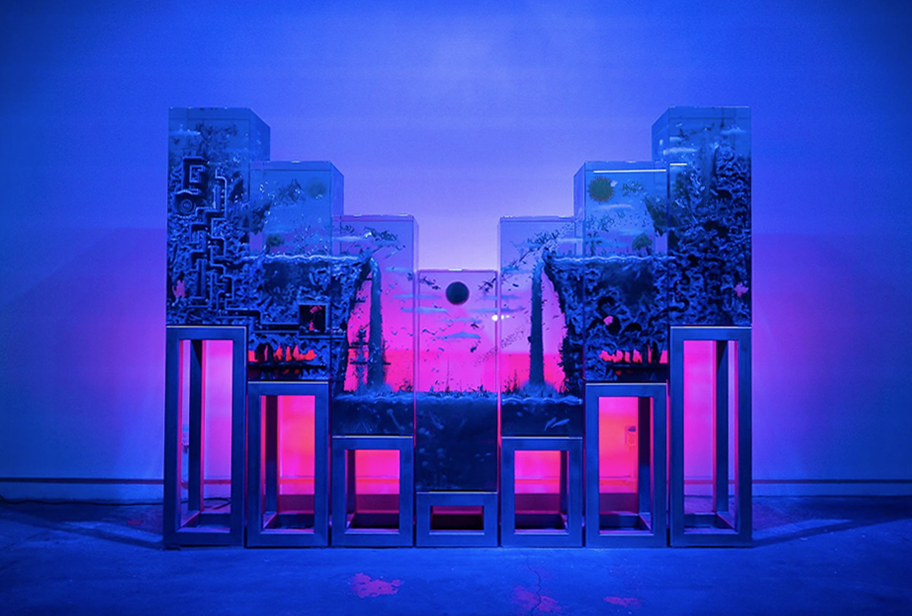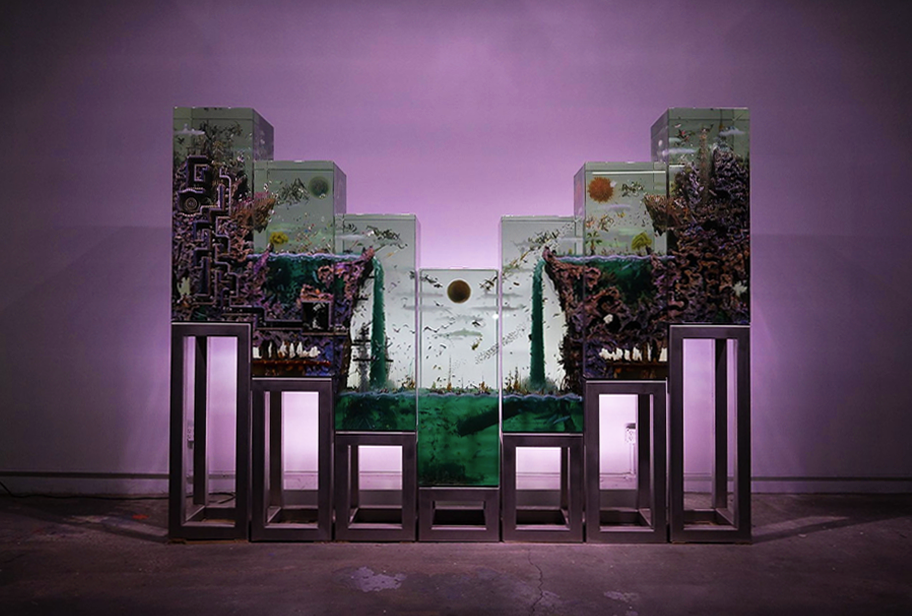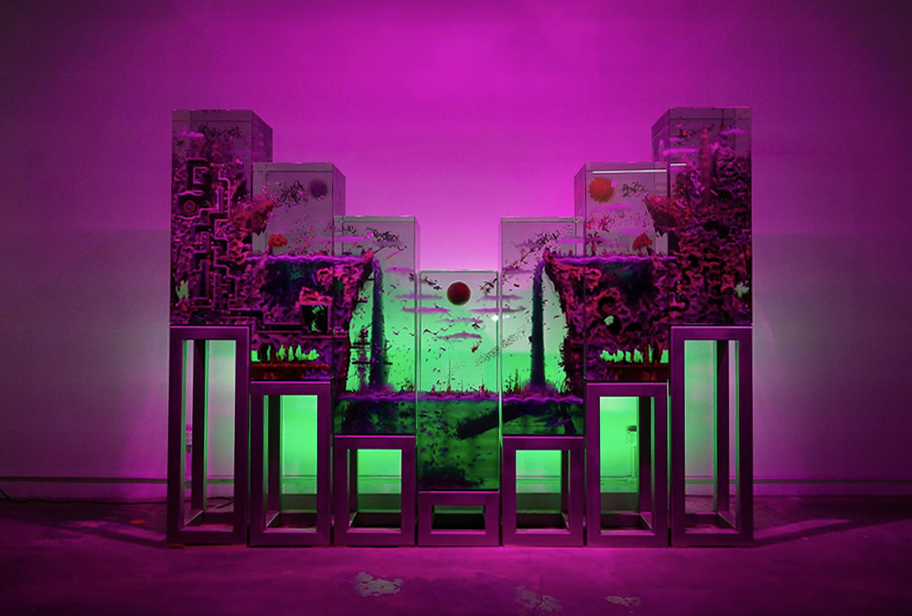Next-wave integration firm OneButton focuses on creating the perfect environment, not pushing the buzzword tech
by Kirsten Nelson
May 31, 2022
In an overly wired, overly touchscreened, too much media stimulation world, sometimes the perfect antidote is actually more technology. This isn’t a “build your immunity” kind of thing. It’s a thoughtful engineering thing. When the electronic chaos around you is tamed by the right amount of analog consideration, suddenly bliss emerges.
To prove this scientific truth, I paid a visit to the east coast office of residential tech’s finest artisanal practitioners, OneButton. They know how to finesse the perfect blend of invisible technology and opulent electronic environmental augmentation. Anywhere on the scale of “I don’t want to see a single gadget in my home” up to “Please build a wall of sound and blinking lights in my media room,” this bicoastal integration firm can make it happen.
When I told Co-Founder Matt Emmi I’m writing about creating compelling sensory immersion in the home, including the human-centric lighting I first learned about in the OneButton studio, along with NFTs and art-world-centric large-scale media walls and beyond, he was immediately enthusiastic.
“Yes, all of that. I want more of that. That’s exactly what we want to do,” Emmi said. “We’re still looking for more people who want to turn one of their rooms into an art media wall. We haven’t found it in Manhattan yet, but I do think that’s definitely the future. That’s where we’re going.”
This is not to be mistaken for a desire to dive headlong into mainstream media’s depiction of “future home tech” being all about VR and curved monitors and the things you see at CES. On the contrary, Emmi said, he wants to talk about anything but those “meta cyberpunky things.”
He’s more interested in creating wonder in real life. “What I like about what we do is that it generally involves shared experiences and entertainment and art and ideas and expression,” he enthused. “That, to me, is fun. And VR and curved monitors are none of that.”
OneButton used shoji screens in the multilayered shading for this residence in 432 Park, NYC to help create an appropriate environment for works by artist Hiroshi Sujimoto

Matt Emmi
Matt Emmi
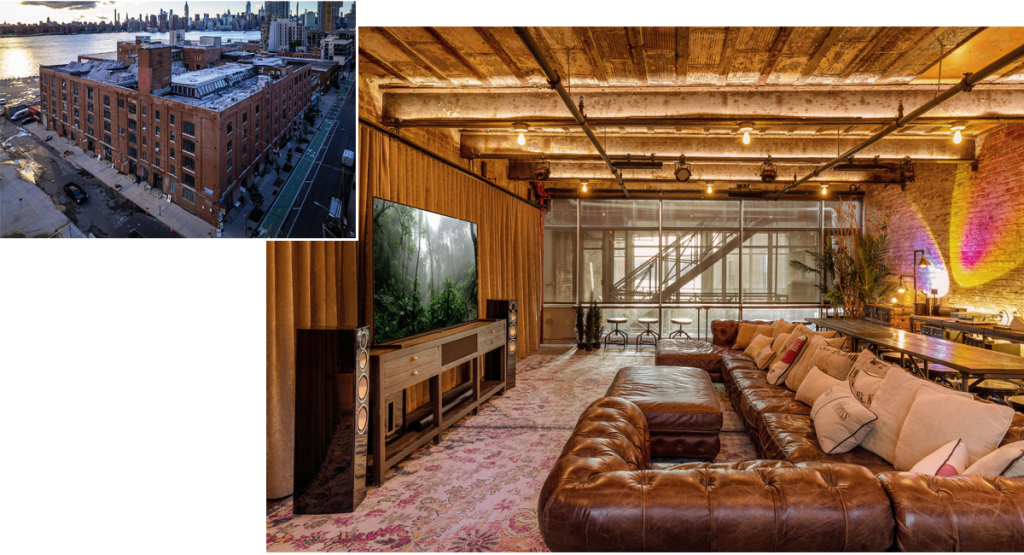
OneButton’s headquarters, located in a Greenpoint, Brooklyn loft
lounge photo by John Frattasi
OneButton’s headquarters, located in a Greenpoint, Brooklyn loft
lounge photo by John Frattasi
So how do we get to his panacea of just the right amount of tech? Maybe it’s no surprise that it can be found in the artfully assembled rustic environs of OneButton’s historic loft headquarters in Brooklyn. Occupying a high floor in one of those waterfront buildings in Greenpoint where every film and television production company seems to be renting space, this band of artists and technologists was an early occupant of one of the last bastions of studio space in the area.
Years ago, the first time I set foot in this office and relaxed into a giant sectional sofa with a glass of kombucha (on tap! naturally), I had a revelation about how technology can actually be made more palatable to the tech averse. Back then, the major delineating factor that told me OneButton was redefining luxury was actually, appropriately enough, a button—or not a button, actually, a switch. It was a beautiful brass implement from Meljac, which charmingly enough looked like an ancient toggle switch but was in fact a multi-function magical device for controlling a contemporary home.
That was just the beginning. Since then, I’ve relied on visits to OneButton to find out what’s new in low-key high-tech living. Also, they keep pouring the kombucha, which is nice.
So, what was brewing besides the fermented beverages on my most recent visit? Here are the highlights, all of which I could write several more columns about and probably will:
If you’re going to display artwork on a flat panel, think about lighting it like actual artwork . . .
This was one of those moments the French call “frisson” when Emmi demonstrated this combination of video and lighting for me. Essentially, if you show artwork in a rectangle on the wall, and it’s only backlit by the display itself, it’s always going to look like a TV. But if you light it from the exterior as you would a work of art, it will take on an entirely new dimension—especially if you tune the lighting perfectly to work with the content and interior design, as OneButton does with Ketra. “It furthers the illusion that what you’re looking at is incidental light reflected, not direct light projected at you,” Emmi explained, and I was enthralled.
Speaking of making displays disappear . . .
“We’re moving TVs out of this realm of a thing you watch into something that adds to the ambiance and the experience of the space,” Emmi said. And then he produced two more magic tricks. First, the deceptively simple idea of displaying a digital swatch of wallpaper on a transparent OLED so that it matches the wall behind it perfectly. Then lighting it the right way so it’s believable.
Next, Emmi talked about how the new mega “media walls” from Samsung and LG “don’t really have an on or off state, except at the pixel level.” So if you want to create an ambient effect of flames undulating along the bottom of the display, “You’re only consuming as much energy as it’s outputting on the pixels. It’s not like an LCD screen where the backlight is on in full volume and white lets that light through while black is turning it off.” You’re only powering up the pixels that are flickering along the bottom—a fraction of the total usage, which makes the “off state” so much more vibrant than just a big blank rectangle.
OneButton is moving TVs out of the realm of a thing you watch into something that adds to the ambiance and the experience of a space
the variable color temperature of tunable lighting is used to enhance the impact of artist Dustin Yellin’s glass art works
sculpture photos by John Frattasi | video courtesy of Lutron
the variable color temperature of tunable lighting is used to enhance the impact of artist Dustin Yellin’s glass art works
sculpture photos by John Frattasi | video courtesy of Lutron
Sign up for our monthly newsletter to stay up to date on Cineluxe
Lighting analog artwork is also better with tunable fixtures . . .
OneButton is working with a number of artists to light work in their studios to show pieces in their literal best light. And more collectors are going beyond the usual fixed lighting options to tunable lighting fixtures that will keep their work looking its best at all times. Glass works by Dustin Yellin, for example, appear more crystal clear with a bit of magenta glowing on them. This same customizable, ever-evolving lighting treatment can help to tell a more complete story of a work in art galleries and studios. For painter Theo Pinto, OneButton created a Ketra lighting system that will show collectors how a piece will look at any time of day or evening.
Obviously, a lot of great ideas came from this visit to OneButton, and I haven’t even gotten into the “invisible” theaters OneButton is putting into homes. Not to mention the firm’s award-winning work throughout a bespoke residence at the famous 432 Park, where shade control, immersive audio, and a dedicated projection gallery for a specific video art piece create a living complement to the owner’s collection of art works by Hiroshi Sugimoto.
Needless to say, the best is yet to come. “We’re so ready to do this,” Emmi said. “We have all of the ingredients. We have massive display walls, we have high-quality digital art. We have tunable lighting that can interplay with the display wall. Then we can really start interplaying these things and we have the opportunity to have a lot of fun and create amazing spaces.”
Kirsten Nelson is a Brooklyn-based writer, speaker, event content producer, and podcast host who writes frequently for technology brands, integration firms, and experience design agencies. She was the editor of SCN magazine, and before that, co-launched Residential Systems. Kirsten is also a co-founder, editor, and writerly salon host of CreativeStack, a newsletter for the experience design community.
© 2022 Cineluxe LLC



